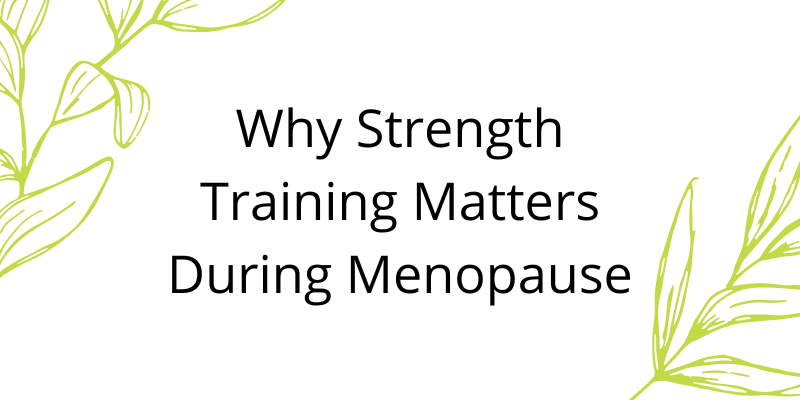Menopause Meets Muscle – Why Strength Training Matters Now More Than Ever!
I thought it best to do a separate blog on lifting weights during menopause as it’s such an important topic. Menopause affects every woman, in many ways, typically between the ages of 45-55, although it can occur earlier than this. I’d like to reiterate why resistance training is the best thing for this stage of life – I’m at this stage so trust me lol 😊
One of the most significant hormonal changes during menopause is the decline in oestrogen levels which can lead to bone density loss and muscle loss (sarcopenia), as well as accelerating conditions such as osteoporosis and muscle weakening. Oestrogen is a key hormone that plays a central role in regulating the menstrual cycle, maintaining bone density, supporting muscle mass, and keeping the skin, heart, and brain functioning optimally. The decline in oestrogen doesn’t happen overnight; it usually begins during perimenopause, the transitional stage leading up to menopause. During this time, oestrogen levels can fluctuate unpredictably before eventually dropping to consistently low levels once menopause is reached (defined as 12 consecutive months without a period).
How Does This Affect Me?
Bone Density
Lower oestrogen levels cause accelerated bone loss, increasing the risk of osteoporosis and fractures. Lifting heavy weights puts stress on bones, signalling the body to rebuild and strengthen them – it’s one of the most effective ways to increase bone mineral density (especially in the spine and hips), reduce the risk of fractures and prevent falls through better balance and stability.
Muscle Mass
One of the most effective ways to combat muscle loss is through lifting heavy weights. Heavy lifting and resistance training stimulates muscle growth (hypertrophy) and maintenance which helps to maintain a healthy weight, burn more calories at rest (muscle is metabolically active) and preserve strength and function. Lifting heavy weights creates tiny micro-tears in your muscle fibres (these are tiny tears, not injuries), which your body treats as a signal to rebuild the tissue stronger and thicker than before, a process called muscle hypertrophy.
Cardio
If you are wondering if there is a place for cardio once you hit menopause, yes absolutely, cardio still plays a valuable role both during and after menopause but how you approach it may need to evolve. The key is to use cardio strategically, not excessively, so it supports your goals (like fat loss, heart health, mood and energy) without contributing to muscle loss, higher cortisol levels or fatigue. So, how much is too much? Too much is doing cardio every day with no strength training, long sessions of 60 minutes or more, high intensity workouts (HIIT, running, spinning) too often as well as not allowing enough recovery time between sessions and training hard without proper nutrition or sleep.
Doing too much cardio increases cortisol levels which can increase belly fat (not what we want!), disrupt sleep, suppress muscle growth and lead to burnout or fatigue. High levels of cortisol can influence cholesterol levels. Cortisol, also known as the stress hormone, plays a role in metabolism and energy regulation. When cortisol levels are elevated due prolonged or high intensity cardio, it can lead to increased blood sugar and fat metabolism, which may contribute to higher cholesterol levels over time. Cardio burns both fat and muscle, and since maintaining and building muscle is especially important during menopause it’s best to aim for around 150 minutes of moderate cardio per week, as too much, too intense, or without strength training and proper recovery can lead to fatigue, muscle loss, and hormonal imbalance.
Of course, lifting weights or bodyweight exercises also trigger cortisol release, but they can improve metabolism and resilience when done in moderation. Shorter, controlled sessions with proper recovery tend to balance cortisol rather than cause excessive spikes.
Mood
Mood swings, anxiety, and depression are common during menopause due to hormonal changes. Lifting heavy boosts natural testosterone and growth hormone production (both support muscle and mood). It releases endorphins which help to combat depression and anxiety and improves sleep quality, which is often disrupted during menopause.
Diabetes & Heart Disease
Menopause increases the risk of insulin resistance, type 2 diabetes and heart disease; however, heavy lifting and resistance training enhances insulin sensitivity and cardiovascular health, helps to manage blood sugar levels, lowers blood pressure and improves cholesterol levels.
Mental Health
Physical strength builds mental strength, and women who lift and use resistance training often report that they have increased body confidence, greater control over their life and a better ability to cope with life transitions. Lifting weights increases the production of endorphins (feel-good hormones), dopamine and serotonin. It helps to regulate cortisol, the stress hormone that tends to be elevated during menopause, as well as improving sleep depth and duration (sleep is often disrupted with hot flushes, insomnia or anxiety during menopause).
So, what better reason do you need to start strength training? The earlier you start, the better 😊
Check us out at www.wfitness.co.uk to book your free consultation to see how we can help you maintain and improve your fitness, both physically and mentally within our ladies only studio gym – where we work hard, laugh harder and have lots of fun at the same time 😊
Much Love
Caroline & Hannah xx
